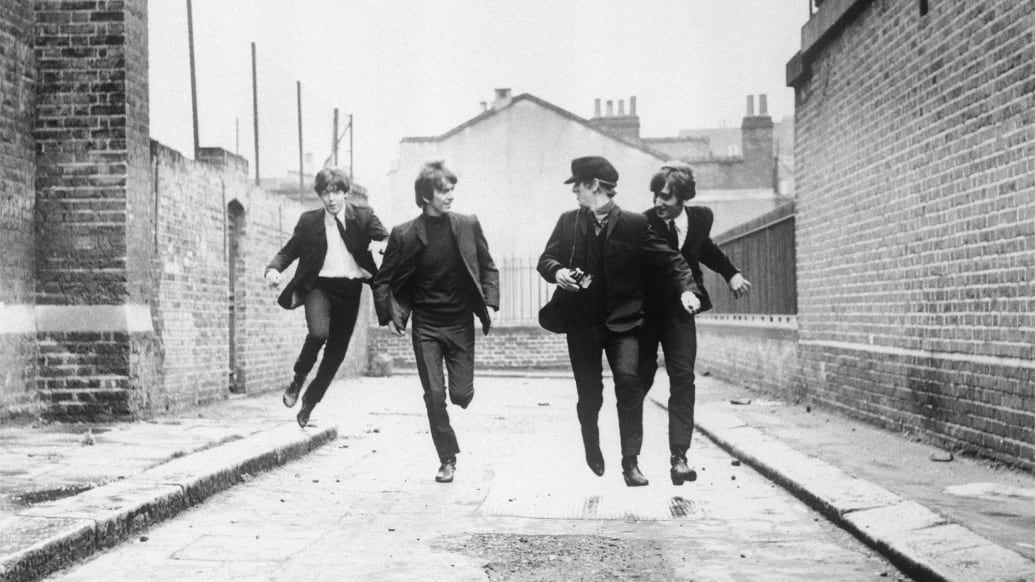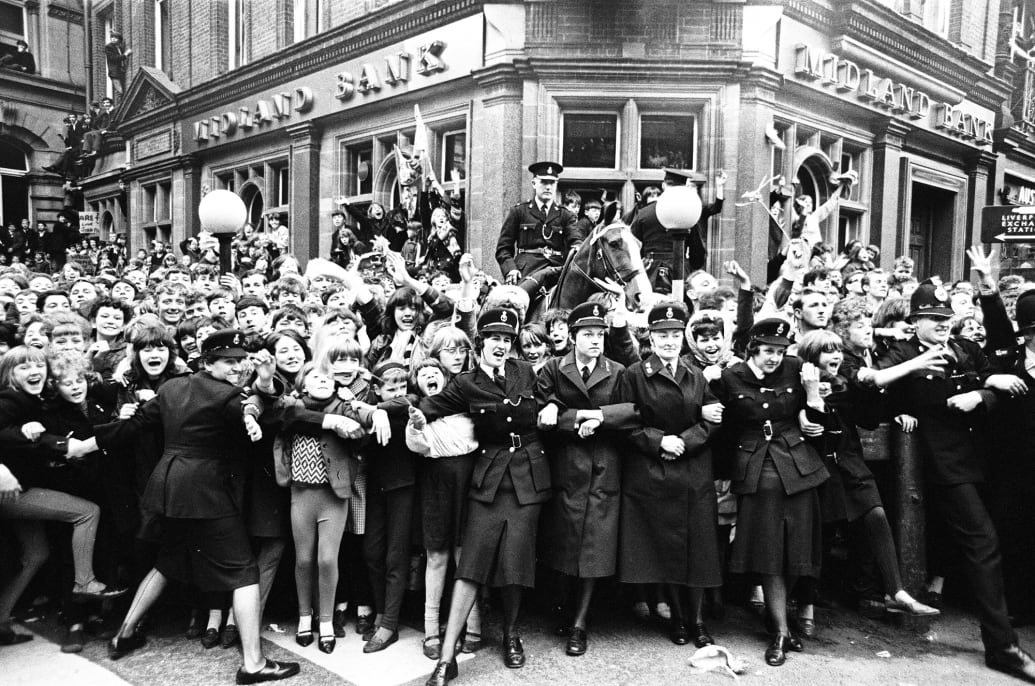
Six decades after “A Hard Day’s Night” was first released, we dig into the joy and transgressive sound of what should go down as the best album the Beatles made.
No matter what the Beatles created, the world never seemed ready for what that was. You only knew that it would be different than anything before. Had you loved the band’s last album, you were also aware that the one about to hit record store shelves would be a departure, a moving-on from what already existed. The Beatles both challenged and rewarded listeners this way, which is among the best things about them.
That surprise factor existed from the start with a single like “Please Please Me,” and, of course, “She Loves You,” a song that feels as if you’re hearing it for the first time after you’ve heard it a thousand times. The albums startled as well: Please Please Me had the gumption to function as a cohesive statement and not merely a couple of hits fleshed out with filler, while sophomore outing With the Beatles was a rhythm and blues masterwork from the industrial cities of America via the ports—and the musical melting pot—of the Beatles’ Liverpool.
If you were around back then, you may have believed that the Beatles were about to settle in, and what they did going forward, for however long they managed to last, would be variations on that marvelous output to date. But this was not the Beatles way, and it was certainly not the way of A Hard Day’s Night, the album they released on July 10, 1964, and the best they ever made.
It sounds strange to say, but Beatles people often don’t know a lot about A Hard Day’s Night and spend far less time with the band’s early material than they do the work from December 1965—when Rubber Soul was released—to the final album in Abbey Road. Prevailing wisdom suggests that before Bob Dylan turned the Beatles on to pot—and after which they decamped into the realm of psychedelics—they weren’t serious artists, but rather pop merchants.
Many people now think that they sang twee songs of teenage love. And it’s true: If you were a 13-year-old girl, you’d have had no problem nursing some sweet romantic fantasy. These boys wished to hold a girl’s hand; perhaps it could be yours.
As time passed, and the later Beatles came to be recognized as artistic revolutionaries for whom the studio itself was an agent of unbounded creativity, the early Beatles fell into what subsequent generations think of as the oldies category. If you listened to “Can’t Buy Me Love,” you likely did so between the likes of Sam Cooke’s “Cupid” and the Beach Boys’ “I Get Around” in the car with your parents.
But here’s what I’ve learned—and just as importantly, what I’ve learned to accept—in my lifetime of thinking hard about the Beatles: They were at their most radical in the years of 1963 and 1964, with A Hard Day’s Night being the ultimate album-length example of their inventiveness, in terms of songwriting and sound-painting. It was material of this nature that caused Dylan to pull over his car on the side of the road and contemplate just what the hell he had heard coming out of his radio from this English collective.
A Hard Day’s Night the LP begins with “A Hard Day’s Night” the song, and specifically what we can call the chord of chords. The opening polytriad conveys more in three seconds than most artists do in a lifetime, because of what it sets up to follow. It’s the sound of annunciation, of newness, awakening, germination. Richard Wagner had his famous Tristan chord, but that was a chord for the opera lovers, whereas the chord that begins “A Hard Day’s Night” is the chord for the world.
The concluding chord of “A Day in the Life” from Sgt. Pepper receives more publicity, but that song itself is an inversion of “A Hard Day’s Night.” Lennon and McCartney trade sections in each; one song finishes, the other begins.


